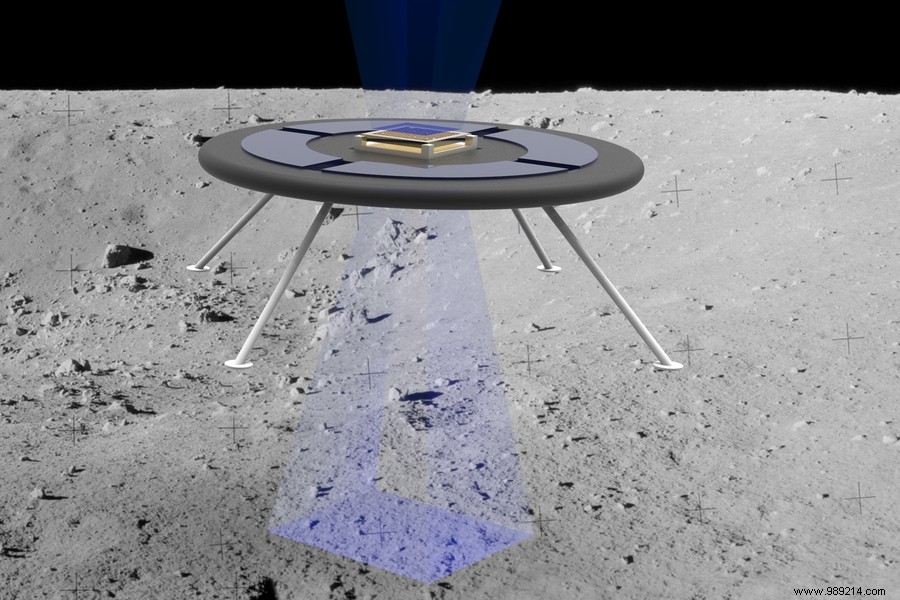American scientists recently detailed a rather amazing idea:a new hovering rover to explore Earth's satellite. This machine capable of levitating could also make it possible to explore asteroids and other surfaces devoid of air. A first prototype of reduced size has already seen the light of day.
What if humanity sent flying saucers to the Moon and elsewhere ? According to a statement from December 21, 2021, the Massachusetts Institute of Technology (MIT) said that one of its teams was working on the issue. In collaboration with NASA, scientists are indeed working on a lunar rover. However, the latter would levitate instead of simply rolling, like current machines of its kind.
The project leaders point out that a powerful electric field is present on the Moon due to direct exposure to the Sun and lack of atmosphere. However, this phenomenon can make the dust levitate more than a meter high. The researchers therefore thought of wrapping their rover in mylar, a polyester film allowing the reflection of 95% of the luminous flux . More specifically, the mylar acts as an insulator with its positive electric field. Thus, the rover and the surface would maintain a relationship of repulsion, which would allow the craft to float in the air.
In theory, the concept in question could also work on asteroids and other celestial bodies devoid of atmosphere.

Nevertheless, scientists think that on a star as imposing as the Moon, the gravitational force could be too strong to sustain levitation for a long time. On the other hand, this limit could be exceeded by means of ion beams. In practice, it would be necessary to point at both the rover and the ground small thrusters containing ionic liquid . Thus, it would increase the positive charge of the craft and the ground surface at the same time, and thus generate sufficient force for levitation.
The project has already given birth to a prototype. However, it is a scale model, in other words a machine of about one kilogram able to levitate at a height of one centimeter . For the researchers, the next step will be to improve the modeling in order to reach greater heights. Eventually, this rover could allow us to explore the recesses of the Moon and other hard-to-reach bodies for rolling rovers.